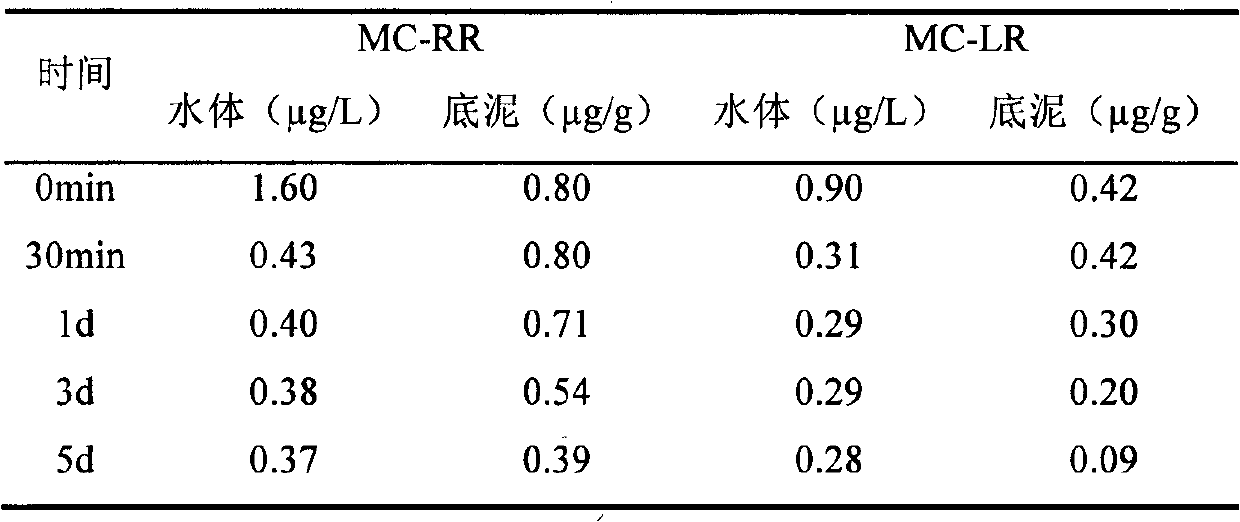Material and method for repairing polluted water and bottom mud
A composite material and water body technology, applied in the field of bioremediation, can solve problems such as increasing treatment costs and water quality safety
- Summary
- Abstract
- Description
- Claims
- Application Information
AI Technical Summary
Problems solved by technology
Method used
Image
Examples
Embodiment 1
[0017] Example 1: Algae toxin-polluted water body and sediment remediation experiment
[0018] First, prepare the composite material loaded with algal toxin-degrading bacteria: soak 20 g of diatomite with 5% hydrochloric acid for 2 hours, wash with distilled water until neutral, then soak diatomite with 5% sodium hydroxide for 2 hours, wash with distilled water until neutral, wash until neutral Add diatomaceous earth to 500ml algal toxin-degrading dominant bacteria suspension, react in a water bath shaker at 30°C for 2h at a shaking speed of 100r / min, then let it stand for 10min, and pour it out after the sedimentation is complete Wash the precipitate three times with normal saline to elute the unadsorbed algal toxin-degrading dominant bacteria, and the density of microorganisms loaded on the prepared solid material is 4×10 6 pcs / g.
[0019] Then prepare the modified soil composite material loaded with algae toxin-degrading bacteria: adopt 5g Taihu Lake bank soil of 180 mesh ...
Embodiment 2
[0023] Example 2: Eutrophic water body and sediment restoration experiment
[0024] First prepare the composite material loaded with photosynthetic bacteria and nitrifying bacteria: soak 20g of clean soil along the Shiba Bay of Taihu Lake in Wuxi with 5% hydrochloric acid for 2 hours, wash with distilled water until neutral, then soak the soil with 5% sodium hydroxide for 2 hours, wash with distilled water until neutral Add neutral soil to 500ml bacterial suspension (mixed with 250ml photosynthetic bacteria suspension and 250ml nitrifying bacteria suspension), in water bath shaker, at 30℃, at 100r / min The shaking speed was reacted for 2 hours, and then stood still for 10 minutes. After the sedimentation was complete, the supernatant was poured out, and the sediment was washed three times with normal saline to elute the photosynthetic bacteria and nitrifying bacteria that were not firmly adsorbed. The prepared solid material was loaded with The microbial density is 3×10 9 pcs / ...
PUM
 Login to View More
Login to View More Abstract
Description
Claims
Application Information
 Login to View More
Login to View More - R&D
- Intellectual Property
- Life Sciences
- Materials
- Tech Scout
- Unparalleled Data Quality
- Higher Quality Content
- 60% Fewer Hallucinations
Browse by: Latest US Patents, China's latest patents, Technical Efficacy Thesaurus, Application Domain, Technology Topic, Popular Technical Reports.
© 2025 PatSnap. All rights reserved.Legal|Privacy policy|Modern Slavery Act Transparency Statement|Sitemap|About US| Contact US: help@patsnap.com


